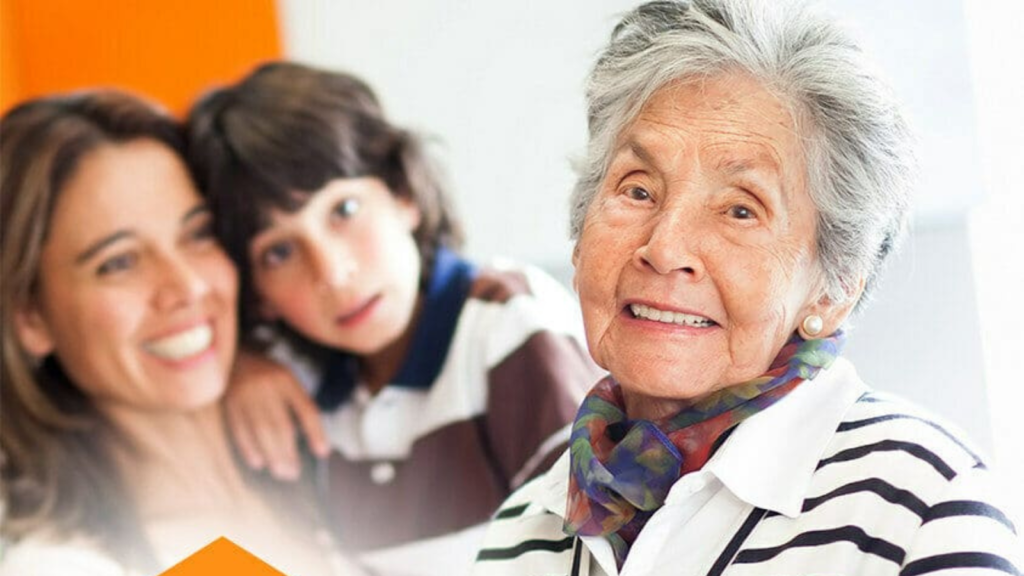
CalGrows: California Caregiver Support
Building Better Caregivers: A Beacon of Support in California
In California, there’s a shining light of support for unpaid family/friend caregivers who selflessly care for their loved ones day in and day out. There are two types of caregivers. It is important to distinguish between caregivers (those who care for family and friends) vs. direct care workers (this includes nurses and aids – they come into the home via an agency and are paid).
Recognizing the critical role caregivers play in our healthcare system, Building Better CaregiversⓇ, an innovative, evidence-based program is designed to empower those providing care to a loved one.
This 6-week online, peer-to-peer education and support program stands as a testament to our commitment to enhancing the health and wellbeing of caregivers and their loved ones across California. Our program has also been featured on the list of Best Programs for Caregiving for family caregivers certified by the Benjamin Rose Institute on Aging and the Family Caregiving Alliance.
Building Better Caregivers targets the emotional, physical, and system challenges caregivers face. Caregivers:
- Join when you want, go at your own pace and participate during a time that works for you.
- Join a group workshop allowing caregivers to log in several times a week for 6 weeks at their convenience. Are assigned to a group of 30 other caregivers, and they interact in weekly lesson content, discussion boards, and one-on-one messages.
- Are facilitated by trained facilitators who have been or currently are caregivers themselves. Facilitators guide lessons, discussion, and provide personal support.
- Step through a curriculum that is derived from an evidence-based chronic disease self-management program originally developed in 2009 by Stanford University.
Funded by CalGrows
This program is free for California residents and funded by the California Department of Aging CalGrows Innovation Fund.
The Benefits of Building Better Caregivers for Caregivers
In California, caregiver support has become a pivotal concern, as the number of individuals requiring care continues to grow. This innovative program is designed to address the unique challenges faced by caregivers, providing them with the tools they need to succeed in their roles.
Tailored Education and Resources
One of the best parts of the Building Better Caregivers program is how it focuses on giving caregivers personalized education and resources that fit what they deal with every day. Instead of just general tips, caregivers learn specific skills and strategies to help manage their loved ones’ unique challenges, like dealing with chronic illnesses, managing a care plan, or supporting mental health. We make sure caregivers get the right information to feel confident and informed.
Strengthened Community Connections
Caregiving can be lonely, but with our program, caregivers don’t have to feel isolated. We create a strong community where caregivers can share their experiences, solutions, and support with each other. This community of fellow caregivers becomes a great source of both emotional support and practical advice, helping to lessen feelings of loneliness and stress.
Enhanced Caregiver Well-Being
At the core of Building Better Caregivers is our commitment to the caregivers’ own well-being. We know caregivers often put their own health last, so our program focuses on boosting both their physical and mental health. We offer everything from stress management techniques and self-care tips to advice on staying fit and eating right. We’re dedicated to helping caregivers stay healthy and resilient, so they can give their best care.
Increased Confidence and Competence
After going through our program, caregivers feel much more ready to handle the challenges of caregiving. They come out with the knowledge and abilities they need to manage complex care situations, work their way through healthcare systems, and effectively stand up for their loved ones’ needs.

Building Better Caregivers Reviews
“It has been the most rewarding time to learn about myself as I care for the love of my life. Other’s comments, celebrations, actions, and discussions provided me with insightful tools that helped me to be the best – to do what I do, but better. It helped O’Neill and I at the same time. This course is the channel to become and remain emotionally, psychologically, spiritually, and mentally healthy”
- Building Better Caregivers Participant
“Easy and convenient to use, online workshop that came with a workbook at no charge. Excellent and encouraging facilitators. Learned a lot on a weekly basis for a short period of time. Acquired very helpful resources, tools, techniques to better support myself, care partner and family. Would highly recommend to all caregivers.”
- Building Better Caregivers Participant
“This program has helped me realize everything my loved one does doesn’t need a reaction. Sometimes letting them talk for the sake of letting them feel heard is perfectly acceptable. No need to make a fuss about the little stuff. Just let it go. It’s not worth stressing about.”
- Building Better Caregivers Participant
How Building Better Caregivers Handles Caregiver Burnout
Caregiving, although rewarding, can often lead to significant stress and, ultimately, caregiver burnout — a state of physical, emotional, and mental exhaustion. Our approach to handling caregiver burnout involves several key strategies designed to support California caregivers at various stages of their journey.
Comprehensive Educational Material
This material covers a wide range of topics, from understanding the psychological challenges of caregiving to practical techniques for stress management and problem-solving. Our educational resources are constantly updated to reflect the latest research and practices in caregiving, ensuring that those we support have access to the most current and effective strategies.
Peer-to-Peer Support
Recognizing the immense value of shared experiences, Building Better Caregivers offers a dynamic peer-to-peer support system. Through our facilitated online forums, caregivers can connect with others in similar situations, share their stories, and offer mutual support. This system not only helps with feelings of isolation but also helps to provide practical advice and empathy, which are crucial in managing stress and preventing burnout.
Training and Support System For Caregivers
Effective caregiver training should cover problem-solving and decision-making, stress management, and self-care to prevent burnout, utilizing online tutorials and peer support for continuous learning. Additionally, a robust support system includes peer facilitators who have experience as family caregivers who are available to connect with through the 6 week workshop. Building Better Caregivers offers this to caregiver participants.
Frequently Asked Questions
What are the 4 types of caregivers?
There are essentially four main types of caregivers: informal caregivers (family members or friends), professional caregivers (paid healthcare workers), private duty caregivers (hired directly by families), and volunteer caregivers (individuals who provide care through various nonprofit or community organizations).
What kind of government policy supports caregiving for elderly relatives?
Government policies supporting caregiving for elderly relatives include the Family and Medical Leave Act (FMLA), which allows eligible employees to take unpaid, job-protected leave for specified family and medical reasons, including caring for an elderly relative. Additionally, programs like Medicaid may offer caregiver support services, and specific states may have their unique policies and programs aimed at supporting caregivers.
Who is classified as a caregiver?
A caregiver is classified as anyone who provides care for another person who needs assistance with daily activities. This can include family members caring for elderly relatives, parents caring for children, individuals caring for a disabled spouse, or professional healthcare providers offering specialized care.
What to do when a family member can’t take care of themselves?
When a family member cannot care for themselves, it’s important to assess the level of care they need and explore the available options. This may involve hiring in-home care professionals, considering a move to an assisted living facility, or applying for governmental support services. Resources like Building Better Caregivers can also provide guidance and support for caregivers.
What is caregiver syndrome?
Caregiver syndrome refers to the physical, emotional, and mental strain experienced by caregivers. Symptoms can include stress, depression, anxiety, exhaustion, and a feeling of being overwhelmed. It highlights the importance of caregiver support programs and resources to help manage these challenges.
What is a personal caretaker?
A personal caretaker is an individual hired to assist with the personal care needs of someone who requires help with daily activities. This can include bathing, dressing, meal preparation, and medication management, among other tasks. Personal caretakers can be hired independently or through an agency.
What is it called when you have to take care of your parents?
Taking care of aging parents is commonly referred to as “parenting your parents.” This role reversal often involves adult children becoming the primary caregivers for their elderly parents, providing them with physical, emotional, and sometimes financial support.
How much do family members get paid for caregiving in California?
Payment for family members providing caregiving in California varies depending on the program. For instance, through the In-Home Supportive Services (IHSS) program, caregivers can be paid if they are caring for a low-income elderly or disabled family member who qualifies for the program. A caregiver may also be paid through the VA Program of Comprehensive Assistance. Compensation rates vary based on county and specific circumstances.
Who qualifies for IHSS in California?
To qualify for In-Home Supportive Services (IHSS) in California, the person receiving care must be over 65, blind, or disabled, and a resident of California. They must also be eligible for or receive Medicaid (Medi-Cal in California) and require the type of care IHSS provides to live safely at home.
How much should a caregiver be paid in California?
The compensation for a caregiver in California varies greatly depending on numerous factors like the level of care required, whether the caregiver is part of a program like IHSS, their qualifications, and if they are hired privately or through an agency. As of the latest data, hourly rates can range significantly, so it is recommended to research current standards and consider all variables when determining pay.



